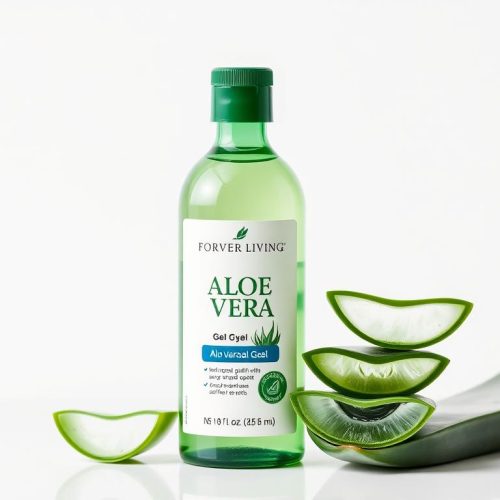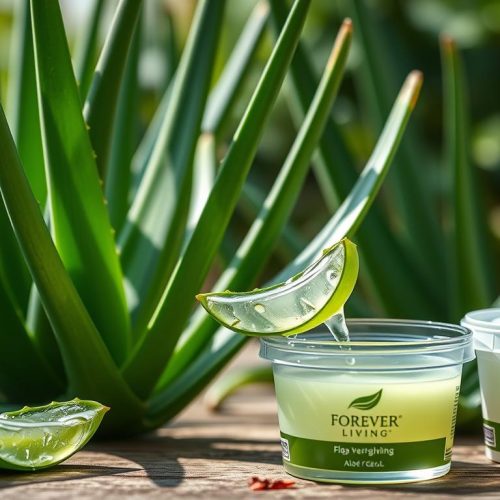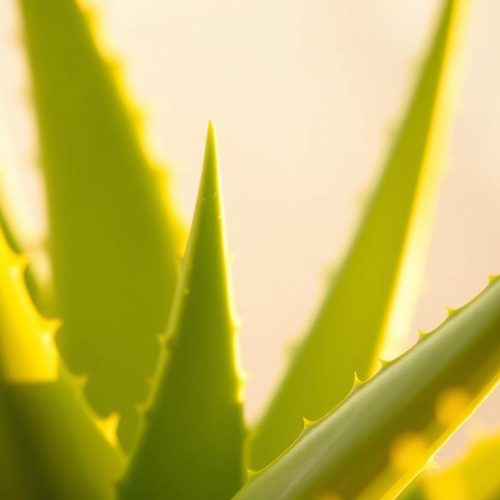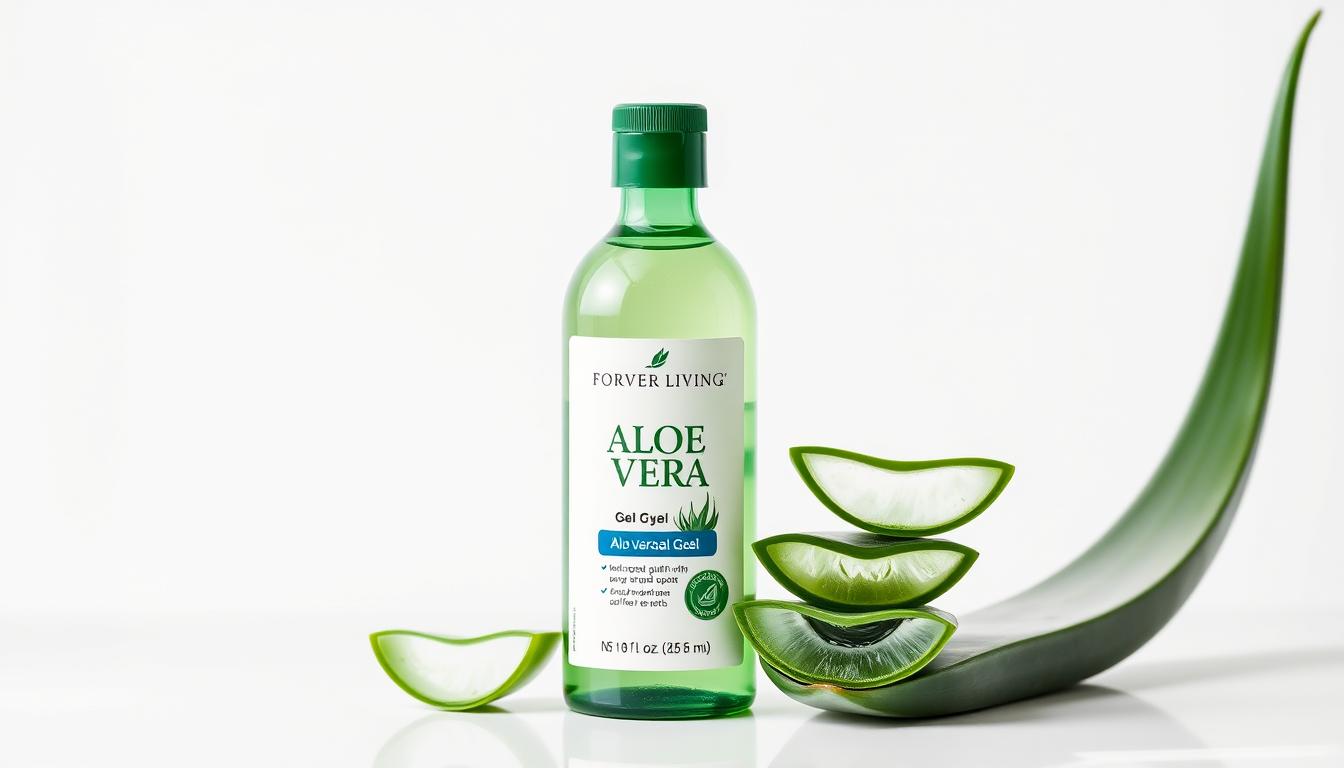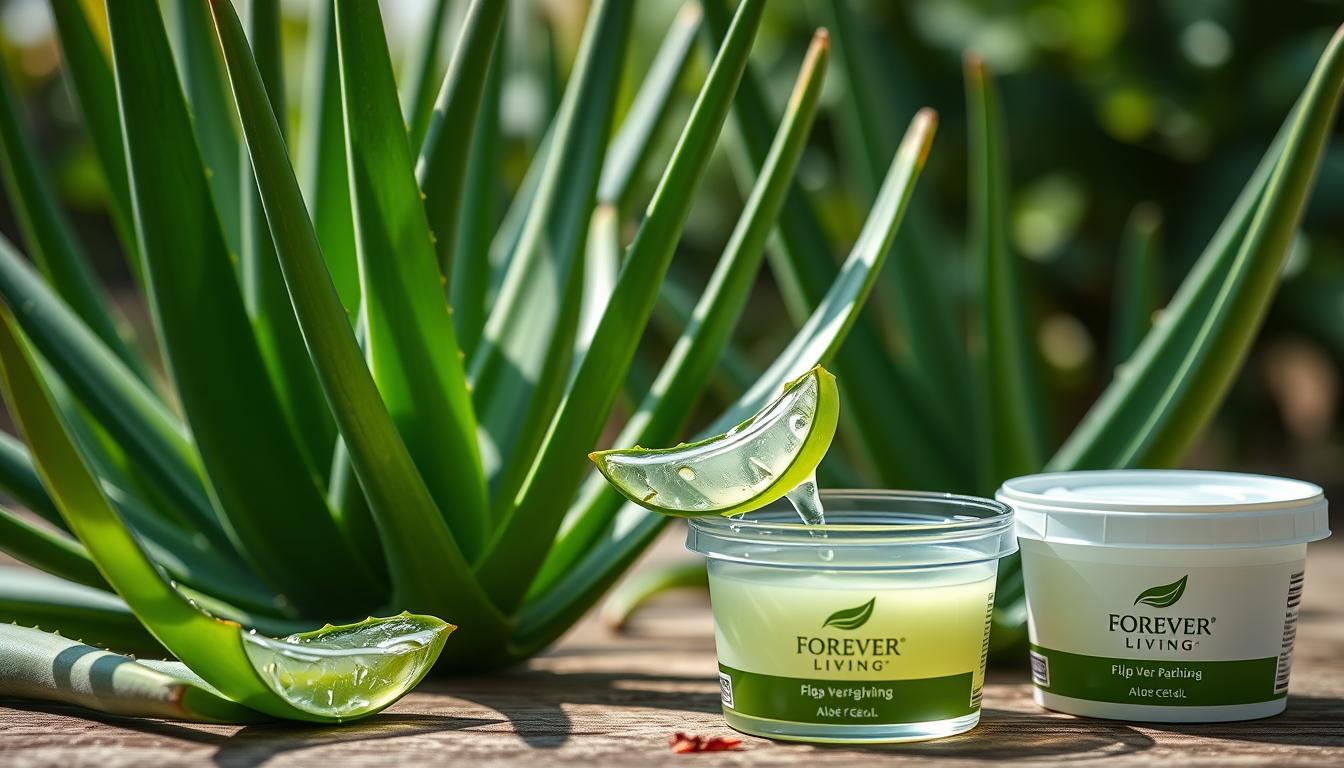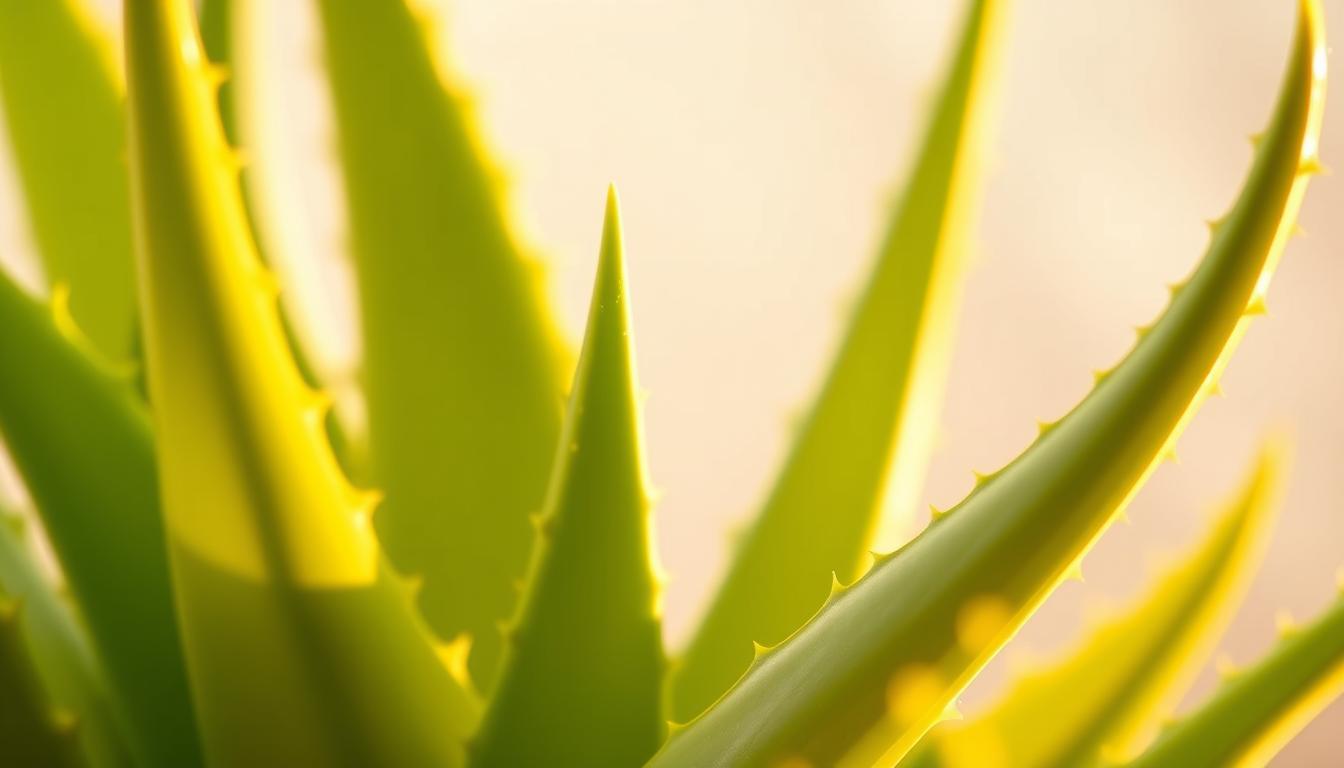- Understanding Aloe Vera: Benefits and Basics
- Selecting the Perfect Aloe Vera Plant
- Choosing the Right Container for Your Aloe Vera
- Creating the Ideal Soil Mix for Aloe Vera
- Light and Temperature Requirements for Thriving Aloe Vera
- How to Grow Aloe Vera at Home: Watering and Maintenance
- Propagation Methods for Expanding Your Aloe Collection
- Seasonal Care and Harvesting
- Conclusion: Growing Successful Aloe Vera Plants
- FAQ
- How often should I water my aloe vera plant?
- What is the ideal soil mix for growing aloe vera?
- How much sunlight does aloe vera need?
- Can I grow aloe vera indoors?
- How do I propagate aloe vera?
- What are the benefits of growing aloe vera at home?
- How do I harvest aloe vera gel?
- What are the common mistakes to avoid when growing aloe vera?
Did you know that aloe vera is one of the most versatile plants you can grow at home, offering numerous health and medicinal benefits? With its increasing popularity, many are now turning to cultivating this low-maintenance plant in their own gardens or indoor spaces.
Growing an aloe vera plant can be a rewarding experience, providing you with a natural remedy for various skin issues and a beautiful addition to your home decor. To get started, it’s essential to understand the basics of aloe vera care.
- Understanding Aloe Vera: Benefits and Basics
- Selecting the Perfect Aloe Vera Plant
- Choosing the Right Container for Your Aloe Vera
- Creating the Ideal Soil Mix for Aloe Vera
- Light and Temperature Requirements for Thriving Aloe Vera
- How to Grow Aloe Vera at Home: Watering and Maintenance
- Propagation Methods for Expanding Your Aloe Collection
- Seasonal Care and Harvesting
- Conclusion: Growing Successful Aloe Vera Plants
- FAQ
- How often should I water my aloe vera plant?
- What is the ideal soil mix for growing aloe vera?
- How much sunlight does aloe vera need?
- Can I grow aloe vera indoors?
- How do I propagate aloe vera?
- What are the benefits of growing aloe vera at home?
- How do I harvest aloe vera gel?
- What are the common mistakes to avoid when growing aloe vera?
Key Takeaways
- Selecting the right container for your aloe vera plant
- Understanding the soil mix requirements
- Providing the appropriate light conditions
- Watering your aloe vera plant correctly
- Maintaining your aloe vera plant for optimal health
Understanding Aloe Vera: Benefits and Basics
With its numerous health benefits and easy care requirements, aloe vera has become a popular choice for indoor gardening. This succulent plant is not only aesthetically pleasing but also offers a range of uses, from medicinal applications to cosmetic benefits.
What Makes Aloe Vera a Popular Houseplant
Aloe vera’s popularity as a houseplant can be attributed to its low-maintenance requirements and versatility. It thrives in indoor conditions with minimal care, making it perfect for busy individuals or those new to gardening.
According to gardening experts, aloe vera is among the top recommendations for indoor plants due to its ability to purify the air and its resilience to neglect. As noted by a renowned horticulturist, “Aloe vera is a forgiving plant that can survive with minimal watering, making it an ideal choice for indoor spaces.”
“Aloe vera is known for its healing properties and is often used in skincare products and remedies for burns and skin irritations.”
Health and Medicinal Benefits
Aloe vera is renowned for its health and medicinal benefits. The gel extracted from its leaves is used to soothe burns, skin irritations, and other dermatological conditions. Its anti-inflammatory properties make it a popular ingredient in skincare products.
| Benefit | Description |
|---|---|
| Skin Soothing | Aloe vera gel is used to soothe burns and skin irritations. |
| Anti-inflammatory | Aloe vera has anti-inflammatory properties beneficial for skin health. |
| Air Purification | Like other plants, aloe vera helps purify the air, improving indoor air quality. |
Basic Growth Characteristics
Aloe vera is a succulent that thrives in well-draining soil and sunny conditions. It is relatively easy to care for, requiring infrequent watering and moderate temperatures.
To ensure the healthy growth of aloe vera, it’s essential to understand its basic growth characteristics, including its preference for well-draining soil and adequate sunlight. Proper care will enable you to enjoy the many benefits this plant has to offer.
Selecting the Perfect Aloe Vera Plant
Selecting a high-quality aloe vera plant is the first step towards growing it successfully at home. A healthy aloe vera plant is not only aesthetically pleasing, but it also ensures that you can enjoy its numerous health and medicinal benefits.
Identifying Healthy Plants
When choosing an aloe vera plant, look for specimens with thick, green, and firm leaves. Avoid plants with signs of pests, diseases, or physical damage. A healthy aloe vera plant should have a robust root system and an upright posture.
Inspect the leaves for any discoloration or soft spots, as these can be indicators of underlying issues. A vibrant, green color is a good sign of a healthy plant.
Where to Purchase Quality Aloe Vera
You can purchase quality aloe vera plants from reputable nurseries or online stores that specialize in succulents and cacti. Ensure that the seller provides healthy plants and has good customer reviews.
Buying from a trusted source increases the chances of getting a disease-free and pest-free plant, giving you a better start for growing aloe vera at home.
Different Varieties to Consider
There are several varieties of aloe vera, each with its unique characteristics. Some popular varieties include Aloe vera barbadensis and Aloe vera chinensis.
| Variety | Description | Growth Characteristics |
|---|---|---|
| Aloe vera barbadensis | Known for its medicinal properties and widely cultivated. | Fast-growing, large leaves. |
| Aloe vera chinensis | Has slightly different leaf morphology but retains medicinal properties. | Moderate growth rate, compact. |
Understanding the different varieties can help you choose a plant that best suits your needs and preferences for growing aloe vera at home.
Choosing the Right Container for Your Aloe Vera
The container you choose for your aloe vera can significantly impact its growth and overall health. Aloe vera plants are susceptible to root rot if the soil is too wet for too long, making drainage a critical factor in container selection.
Optimal Pot Size and Material
When it comes to the size of the container, a medium to large pot is ideal for aloe vera plants. This size allows for sufficient root growth without holding too much water. In terms of material, terra cotta or ceramic pots are excellent choices because they are breathable and can help prevent waterlogged soil.
A pot that is too small may not provide enough room for the roots to grow, while a pot that is too large can retain too much water, potentially leading to root rot. A general rule of thumb is to choose a pot that is only slightly larger than the plant’s root system.
Ensuring Proper Drainage
Proper drainage is crucial for the health of your aloe vera. Look for containers with at least one large drainage hole in the bottom. If your container doesn’t have drainage holes, you can drill them yourself. Adding a layer of small rocks or broken pottery at the bottom of the pot can also enhance drainage.
Indoor vs. Outdoor Container Considerations
Whether you’re growing your aloe vera indoors or outdoors, the container considerations remain largely the same. However, if you’re growing outdoors in wet or heavy soil areas, consider using raised beds or containers to ensure proper drainage.
For indoor containers, make sure they fit your decorative space while still meeting the drainage and size requirements. Outdoor containers should be able to withstand the elements and potentially more significant temperature fluctuations.
| Container Material | Drainage Capability | Aesthetic Appeal |
|---|---|---|
| Terra Cotta | Excellent | Natural, earthy look |
| Ceramic | Good | Variety of designs and colors |
| Plastic | Variable | Lightweight, easy to clean |
Creating the Ideal Soil Mix for Aloe Vera
To grow aloe vera successfully, it’s essential to understand the importance of a well-draining soil mix. Aloe vera thrives in soil that prevents waterlogging, which can lead to root rot and other issues.
The Perfect Soil Recipe
A recommended soil mix for aloe vera is a blend of 50% potting soil, 30% sand, and 20% perlite. This combination ensures good drainage while retaining enough moisture for the plant’s needs.
The components of this mix work together to provide a healthy environment for your aloe vera. Potting soil provides nutrients and some water retention, while sand enhances drainage. Perlite further improves drainage and aeration, helping to prevent root rot.
Commercial Cactus and Succulent Mixes
For those who prefer a more straightforward approach, commercial cactus and succulent mixes are available. These mixes are designed to provide the necessary drainage and can be a convenient alternative to creating your own mix.
Why Well-Draining Soil Is Critical
Well-draining soil is critical for aloe vera as it prevents root rot, a common issue in succulents. By ensuring the soil drains properly, you can significantly reduce the risk of this problem.
Avoiding Common Soil Mistakes
One common mistake is using regular garden soil, which can be too dense and may not provide the necessary drainage. Avoiding such mistakes is crucial for the health of your aloe vera.
| Soil Mix | Drainage | Nutrient Retention |
|---|---|---|
| 50% Potting Soil, 30% Sand, 20% Perlite | Excellent | Good |
| Commercial Cactus Mix | Very Good | Fair |
| Regular Garden Soil | Poor | Excellent |
By understanding the importance of a well-draining soil mix and how to create or choose one, you can significantly improve the health and growth of your aloe vera. Whether you decide to make your own mix or use a commercial product, ensuring good drainage is key.
Light and Temperature Requirements for Thriving Aloe Vera
Understanding the light and temperature needs of Aloe Vera is crucial for its healthy growth indoors. Aloe Vera plants are known to be relatively low maintenance, but they do have specific requirements when it comes to light and temperature.
Sunlight Needs
Aloe Vera requires bright, sunny conditions to thrive. It needs 6-8 hours of direct sunlight per day. When growing indoors, placing the plant near a sunny window is ideal to meet its sunlight needs. If you’re growing Aloe Vera in a spot that doesn’t receive direct sunlight, consider rotating the plant periodically to ensure even exposure.
Temperature Tolerance and Preferences
Aloe Vera prefers warmer temperatures, typically between 65°F to 80°F (18°C to 27°C). While it can tolerate a range of temperatures, it’s sensitive to frost. Avoid placing Aloe Vera plants near drafty windows or outside in temperatures below 55°F (13°C).
Window Placement for Indoor Plants
For indoor Aloe Vera plants, south-facing windows are ideal as they receive the most sunlight throughout the day. East or west-facing windows can also work, provided they receive direct sunlight for at least 6 hours a day. Be cautious with north-facing windows as they may not provide sufficient light.
Using Grow Lights When Natural Light Is Limited
If natural light is limited in your home, consider using grow lights to supplement the lack of sunlight. LED grow lights are a popular choice as they are energy-efficient and can be adjusted to emit the spectrum of light that Aloe Vera needs. Place the grow lights at an appropriate distance from the plant to avoid burning the leaves.
How to Grow Aloe Vera at Home: Watering and Maintenance
To keep your aloe vera thriving, it’s essential to understand the proper watering and maintenance techniques. Aloe vera is a succulent that stores water in its leaves, stems, or roots, making it drought-tolerant but not immune to overwatering. Proper care will ensure your plant remains healthy and continues to provide its numerous benefits.
Proper Watering Techniques
Watering aloe vera correctly is crucial. Overwatering is the most common cause of death for aloe vera plants, leading to root rot. Check the soil moisture by inserting a finger into the soil up to the first knuckle; if the soil feels dry, it’s time to water.
Water thoroughly until water drains out of the bottom of the pot, indicating that the soil is fully saturated.
The “Soak and Dry” Method
The “soak and dry” method is highly recommended for watering aloe vera. This involves thoroughly watering the plant and then allowing the soil to dry completely before the next watering. This method mimics the plant’s natural habitat and helps prevent root rot.

Seasonal Watering Adjustments
Aloe vera’s watering needs change with the seasons. During the summer months, when the plant is actively growing, it may need more frequent watering. In contrast, during the winter months, the plant is dormant, and watering should be significantly reduced to prevent root rot.
“Aloe vera requires less water during the winter. Reduce watering to once a month or less, depending on your climate.”
Minimal Fertilizing Guidelines
Aloe vera does not require a lot of fertilizer. In fact, overfertilizing can harm the plant. Use a balanced, water-soluble fertilizer during the growing season (spring and summer), diluting it to half the recommended strength to avoid burning the roots.
Fertilizing once a year is sufficient for most aloe vera plants. If you’re using a high-quality potting mix, your plant may not need any additional fertilizer.
Propagation Methods for Expanding Your Aloe Collection
Expanding your aloe vera collection is easier than you think with the right propagation methods. Aloe vera is one of the easiest plants to propagate, making it perfect for beginners and experienced gardeners alike.
Identifying and Removing Aloe Pups
A common method of propagating aloe vera is by removing the “pups” or offsets that grow around the base of the mother plant. These pups are essentially young aloe vera plants that can be separated and grown independently.
To identify aloe pups: Look for small aloe vera plants growing around the mother plant. They usually have their own roots and a few leaves.
Step-by-Step Pup Transplanting
Once you’ve identified the aloe pups, you can remove them from the mother plant and transplant them into their own pots. Here’s a step-by-step guide:
- Carefully dig around the pup to avoid damaging its roots.
- Gently twist the pup to separate it from the mother plant.
- Allow the pup to dry for a few days to form a callus over the wound.
- Plant the pup in well-draining soil, and water sparingly until roots develop.
Leaf Cutting Propagation Techniques
Another method of propagating aloe vera is through leaf cuttings. While not as common as pup propagation, it can still be effective.
To propagate using leaf cuttings: Cut a healthy leaf from the mother plant, allow it to dry for a few days, and then plant it in well-draining soil. Keep the soil moist until roots develop.
“Aloe vera is a succulent that can be easily propagated through leaf cuttings or division of the offsets.” – Gardening Expert
Caring for New Aloe Plants
Newly propagated aloe vera plants require careful care until they are established. Ensure they are placed in a bright, indirectly lit area and watered sparingly until they develop a robust root system.
As Gardening Expert notes, “Proper care for newly propagated aloe vera includes providing adequate light and avoiding overwatering.”
Seasonal Care and Harvesting
Seasonal changes can significantly impact the health of your aloe vera, making it essential to adjust your care strategies accordingly. Understanding these seasonal needs is crucial for maintaining a healthy and thriving plant.
Summer Care Essentials
During the summer, aloe vera plants require more frequent watering due to the increased heat. Ensure your plant gets enough water, but avoid overwatering, which can lead to root rot. It’s also vital to protect your aloe vera from excessive heat by providing some shade, especially during the peak sun hours.
Key Summer Care Tips:
- Increase watering frequency
- Provide shade during peak sun hours
- Monitor temperature fluctuations
Winter Care Requirements
As winter approaches, aloe vera plants require less water due to the cooler temperatures. It’s essential to reduce watering to prevent root rot. If you live in an area where temperatures drop below 50°F (10°C), consider moving your aloe vera indoors to protect it from frost.
Winter Care Considerations:
- Reduce watering frequency
- Protect from frost
- Maintain a cooler but not cold environment
Harvesting and Using Aloe Vera Gel
Harvesting aloe vera gel is a straightforward process that involves cutting open a mature leaf and scooping out the gel. This gel can be used for various purposes, including skin care and soothing burns.
Steps to Harvest Aloe Vera Gel:
- Select a mature leaf from the base of the plant
- Cut the leaf off at the base
- Slice the leaf open and scoop out the gel

By following these seasonal care tips and learning how to harvest aloe vera gel, you can enjoy the many benefits of your aloe vera plant throughout the year.
Conclusion: Growing Successful Aloe Vera Plants
Growing an aloe vera plant at home can be a rewarding experience, providing you with a natural remedy for various skin issues and a beautiful, low-maintenance houseplant. By following the guidelines outlined in this article, you’ll be well on your way to cultivating a healthy and thriving aloe vera plant.
To ensure the success of your aloe vera plant, remember to use well-draining soil, provide plenty of sunlight, and water sparingly. These simple aloe vera care tips will help you avoid common mistakes and enjoy the numerous benefits of this versatile plant.
With proper care, your aloe vera plant will flourish, allowing you to harvest its gel for topical use. By incorporating these easy-to-follow aloe vera care tips into your routine, you’ll be able to enjoy the many rewards of growing this incredible plant at home.
FAQ
How often should I water my aloe vera plant?
Water your aloe vera plant using the “soak and dry” method, where the soil is thoroughly watered and then allowed to dry out completely before the next watering. Adjust your watering schedule according to the season, as aloe vera requires less water during the winter months.
What is the ideal soil mix for growing aloe vera?
Aloe vera thrives in well-draining soil. A recommended recipe is a mix of 50% potting soil, 30% sand, and 20% perlite. You can also use commercial cactus and succulent mixes available in the market.
How much sunlight does aloe vera need?
Aloe vera requires bright, sunny conditions to thrive. It needs 6-8 hours of direct sunlight per day. When growing indoors, place the plant near a sunny window to meet its sunlight needs.
Can I grow aloe vera indoors?
Yes, you can grow aloe vera indoors. To do so, place the plant near a sunny window or use grow lights if natural light is limited. Ensure proper care, including watering and fertilizing, to keep your aloe vera healthy.
How do I propagate aloe vera?
You can propagate aloe vera by removing aloe pups that grow around the base of the mother plant or using leaf cuttings. Allow the removed or cut aloe pup or leaf to dry for a few days before planting it in well-draining soil.
What are the benefits of growing aloe vera at home?
Growing aloe vera at home provides you with a readily available source of aloe vera gel, which can be used to soothe burns, skin irritations, and other skin issues. Aloe vera is also known for its medicinal properties and is a low-maintenance, versatile plant.
How do I harvest aloe vera gel?
Harvesting aloe vera gel involves cutting open the leaf and scooping out the gel. Make sure to clean the leaf and the utensils used to extract the gel to avoid contamination.
What are the common mistakes to avoid when growing aloe vera?
Common mistakes to avoid when growing aloe vera include using regular garden soil, which can be too dense, and overwatering, which can lead to root rot. Ensure proper drainage and avoid getting water on the leaves to prevent rot.
For world’s best Aloe Vera products Country Wise:
INDIA: CLICK HERE
USA: CLICK HERE
CANADA: CLICK HERE
AUSTRALIA: CLICK HERE
UNITED KINGDOM: CLICK HERE


